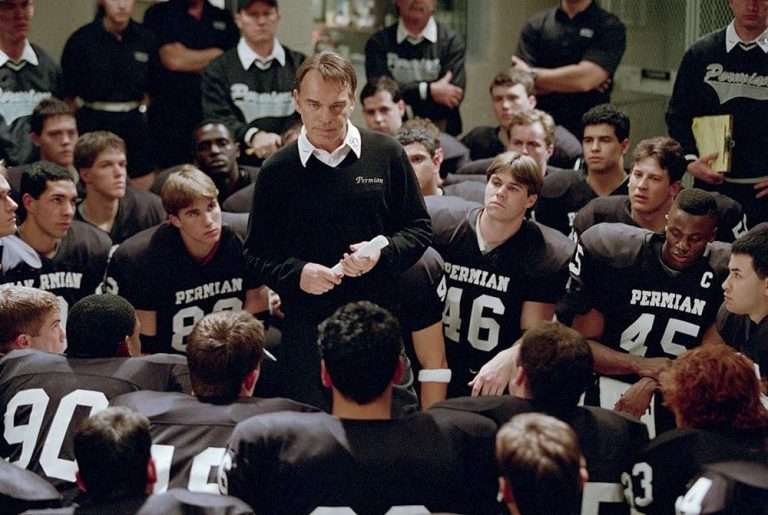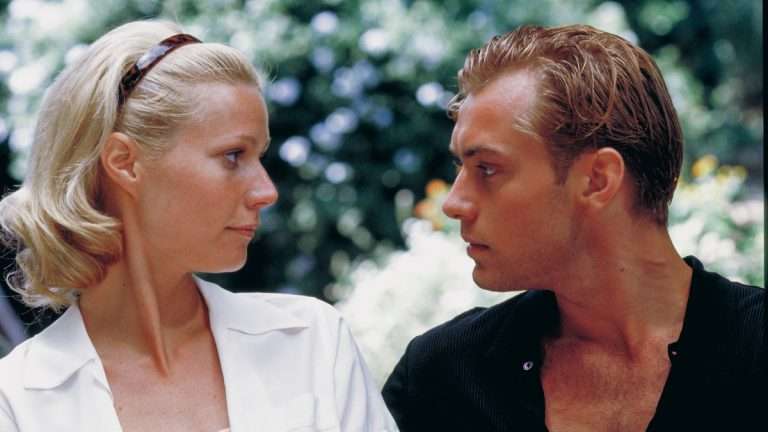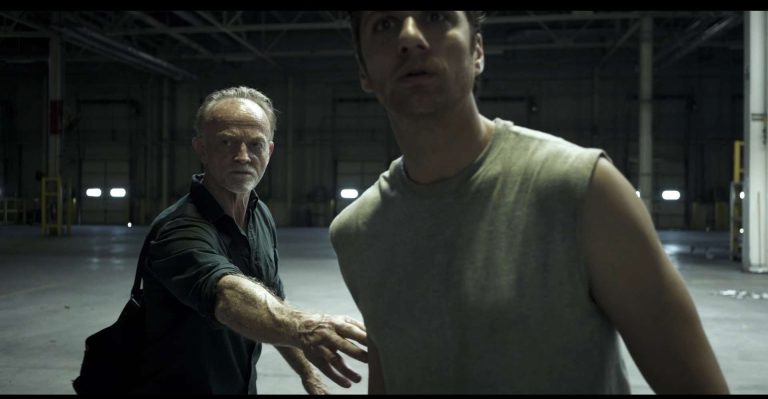The Black Phone Movie Ending Explained & Themes Analysed: “The Black Phone” currently stands as one of the most talked-about and best-rated horror films of the year. The film has proven to work so well across the globe because it’s not just nostalgic for the sake of cashing into some previous IP, but is also reminiscent of vintage photographs and the era of striped baby tees, flared jeans, and The Ramones. Adapted from a short story of the same name written by Stephen King’s son Joe Hill, the movie stars Ethan Hawke in a chilling role, as we watch him take on a rather uncharacteristic role as a crazed masked; villain called “The Grabber.” He is a pedophile sadist serial killer who abducts children and keeps them in a claustrophobic basement, with only a black phone in sight. The film also includes some brilliant performances from child actors Mason Thames and Madeleine McGraw.
Scott Derrickson, who is previously known for flexing his talent in horror films such as “The Exorcism of Emily Rose” and the spine-chilling haunted house “Sinister,” has received plenty of rave reviews, and one of these reasons is its impactful ending that has left fans satisfied and yet puzzled at the same time. While it may seem straightforward, there are hidden depths to its meaning that are worthy of consideration. Let’s take a detailed look at the film’s plot, themes, and ending.
The Black Phone Movie Plot Summary & Synopsis:
“The Black Phone” follows Finney (Mason Thames), a quiet 13-year-old boy who has a bully problem. He becomes the sixth kid to be abducted by “The Grabber” (Ethan Hawke) and spends the second half of the movie locked away in a soundproof basement. It is where the film amps up its thriller and mystical elements, as we watch him do everything he can to safely find his way back to his little sister, Gwen (Madeleine McGraw). For her part, Gwen simultaneously tries to use her budding psychic ability to see things in her dreams to find her brother. Meanwhile, “The Grabber” is haunted by the five children he’s already killed, each of whom also plays a crucial role in eventually saving Finney.
What Does The Black Phone Represent?
The Grabber tells Finney to hang the phone up multiple times in the first scene in which it’s introduced to us. He’s strangely insistent, despite its non-functional state. From all these things, it can be understood that the phone is a necessary piece of The Grabber’s psyche, hence, adding a layer of dark psychic element into the screenplay. He’s being haunted by his past sins and probably is aware that his past victims are calling him up to get revenge, thus, trying to stop him from murdering more innocent children. He’s ignoring their calls. In the film’s crowd-pleasing and satisfying finale, the Black Phone’s cord is used to kill The Grabber. When Finney puts the phone to his ear at the end, and all the children get their final closure in front of their murderer, it’s clear that they were the ones who orchestrated his death throughout the movie. Hence, the title of the film isn’t just for symbolic purposes but also makes sense thematically.
Could The Grabber Hear The Phone All Along?
In the Grabber’s soundproof basement, the titular Black Phone sits on a wall, disconnected and apparently not working. If it’s totally dysfunctional, why hasn’t The Grabber removed it from the space? It makes a handy weapon against him in more than one way, so one would think that he’d have taken it out long ago. The short story the film’s based upon makes it very clear that The Grabber can, indeed, hear the phone. In the film, one of the deceased children tells Finney that the phone’s been ringing all along but that Finney is the first victim who could hear it. He then reveals that The Grabber can hear it, too.
What’s The Point Of Showing The Bulleys?
The film wastes no time in showing us how Finney is often bullied at school. It uses its entire first act to very subtly set up the central dynamics characters share by the use of repetition and reference. Finney and Gwen are also beaten by their alcoholic father. “The Grabber” is deeply disturbed and violent, despite putting on airs of being friendly. His mask constantly keeps changing in different scenes, giving us different glimpses of Hawke’s mysterious face. This makes sure there’s enough room for ambiguity- perhaps he himself went through a traumatic childhood? “The Black Phone” indeed has something to say about violence toward children, in particular, with some of its most uncomfortable scenes featuring Finney and Gwen’s father instead of its terrifying villain. It’s a rather adroit way of obliquely portraying a complex theme in a horror/thriller.
The movie sends out a message about standing up for oneself and, when that’s not enough, finding a group of people who truly understand you to stand along with you. Finney can’t stop his father from beating Gwen, nor can he stop bullies from beating him up. But, emboldened by the other victims of The Grabber’s abuse, he’s able to take back control and be bold enough to stand against the evil murderer’s violence. In doing so, he not only escapes from “The Grabber” but also breaks the cycle of violence, possibly saving many more kids from his future abductions. Visually, we see this as it follows him to the end of the film, where Finney appears confident and no longer miserable or scared at school.
The Black Phone Movie Ending, Explained:
In the film’s closing moments, Finney enacts revenge on “The Grabber” by beating him with the phone itself, after he’s told by a previous victim from his own school, Robin, to add weight to the phone by stuffing it full of dirt. Finney then snaps The Grabber’s neck with the phone cord. It’s Robin who encourages him to “stand up for himself” and use his “mint” arm to take down “The Grabber”.
Before Finney’s attack, The Grabber’s brother Max (James Ransone) figures out that his brother is the one who’s been kidnapping children and killing them all along. We earlier see him pitching his plan to get the killer to the detectives who knock, arriving at his door. And even though Max, a drug addict, had been following the case the entire movie, what he didn’t realize was that his own brother was the perpetrator all along. More than that, Max didn’t realize that the basement that “The Grabber” was keeping the boys it was in the same house as Max the whole time.
When the police invade The Grabber’s home after Finney’s sister Gwen leads them there with her psychic visions, we eventually learn that “The Grabber” owned two homes that were across the street from each other. In one house, the dead bodies of the boys that “The Grabber” kidnapped were buried in man-made graves in the basement. In the other house, Finney was being kept in the soundproof basement where the rest of the boys were trapped before they were killed. However, unlike the rest, Finney was the only boy who heard the black phone ring while stuck in the basement.
In the end, we see Finney finally stand up to free himself from The Grabber’s sadistic clutches. He returns to school, where his persistent bullies no longer harass him as he’s proven his ability to stand in the face of evil truly. It’s here where he finally finds the courage to sit next to his crush and speak to her without any fear.
“The Black Phone” doesn’t cash onto the 70s and 80s nostalgia, even if parallels from films like “IT” and “The Texas Chain Saw Massacre” may become blatantly evident. Even the use of jump scares is rightfully done, with the film’s screenplay relying on its human dynamics and the fact of how unsettling violence and bullying can be to generate horror, rather than relying on unnecessary gore. The Greek-like iconic imagery and the klutzy thrills form an aspect of the film; in the end, the overall message of bravery runs much deeper and adds an element to the horror genre that had been missing for quite some time.


![Midnight Cowboy [1969]: Castaways on the Streets](https://79468c92.delivery.rocketcdn.me/wp-content/uploads/2017/07/Midnight-Cowboy-768x419.jpg)




